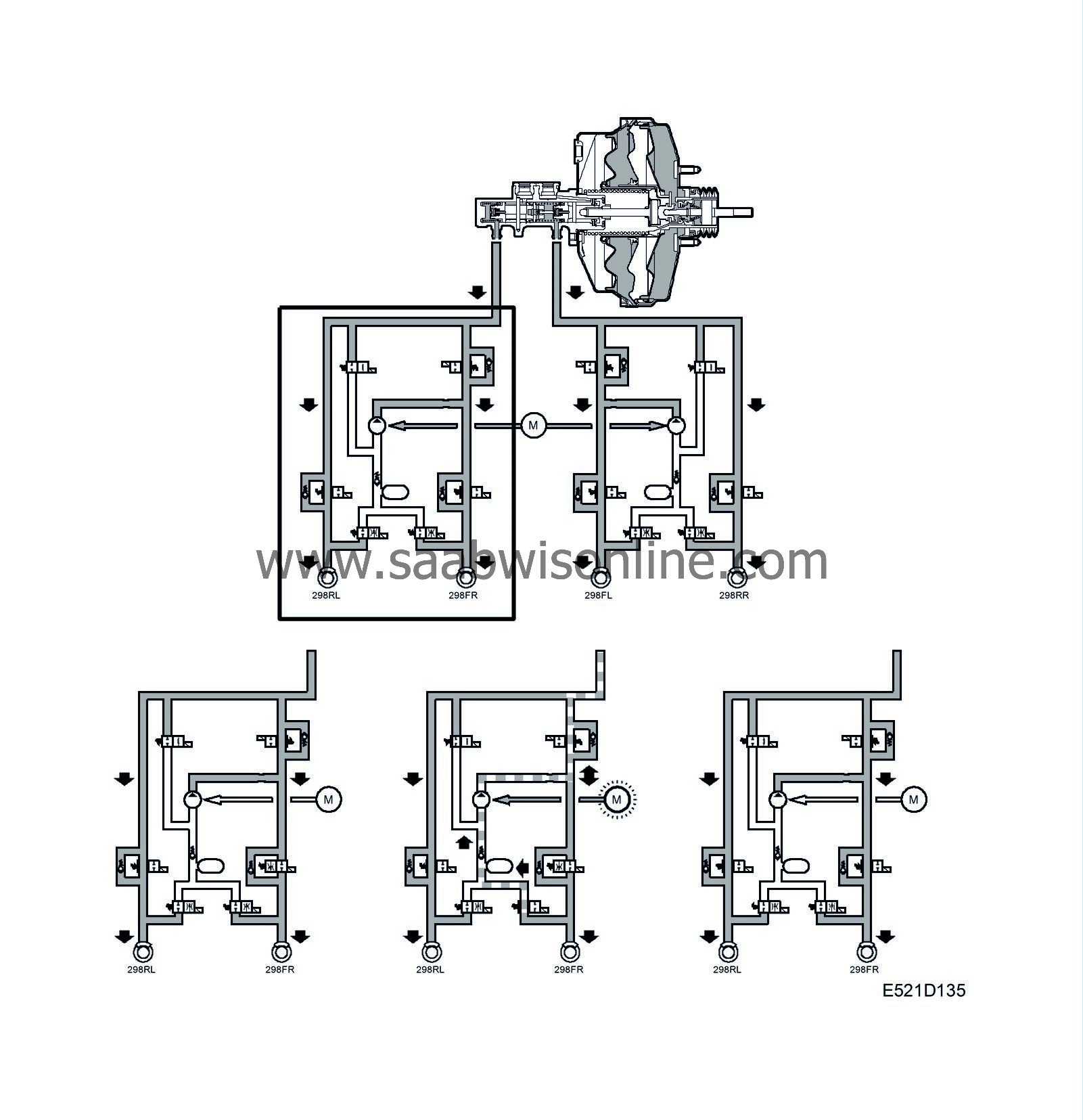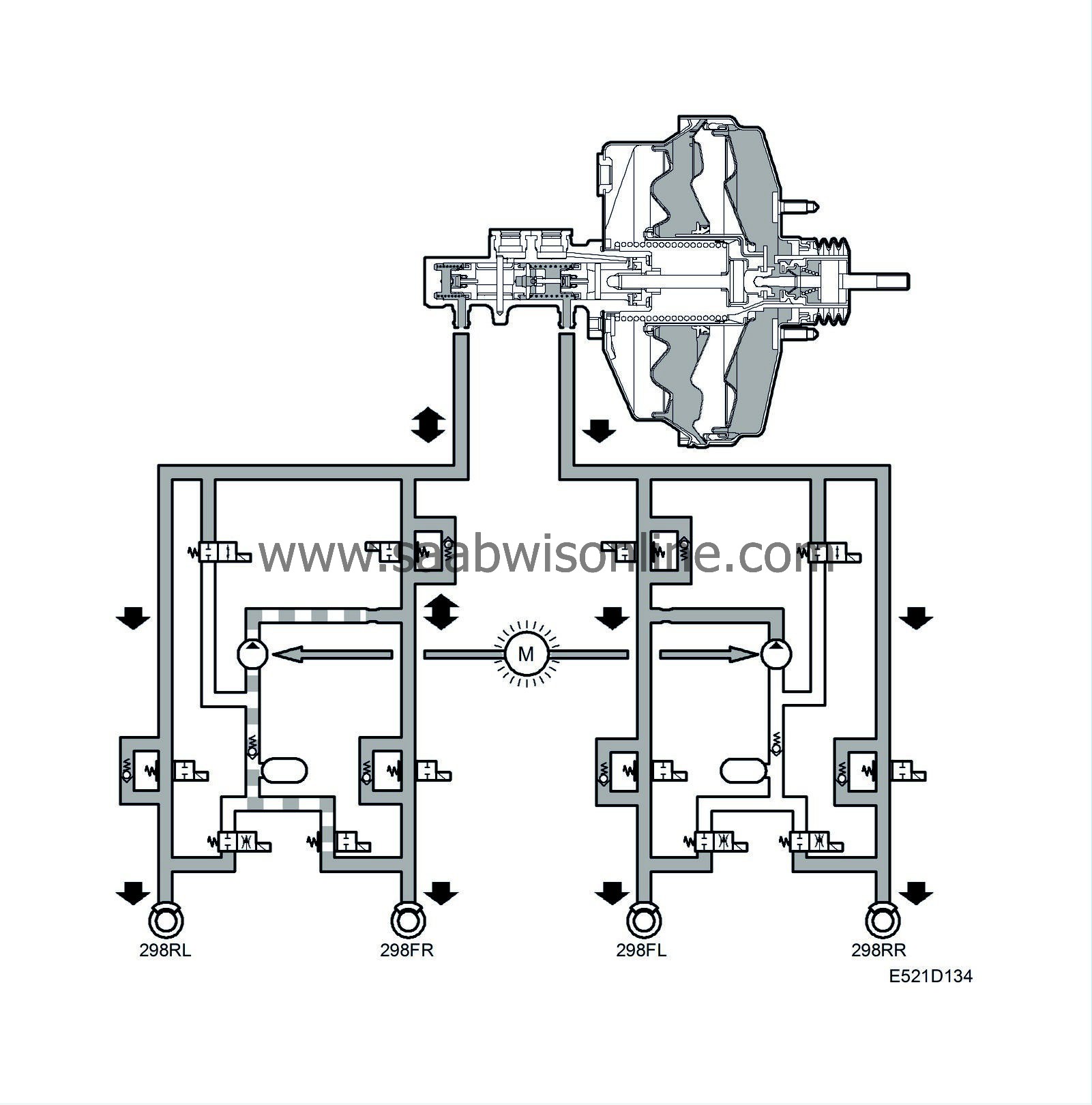Braking with ABS modulation
| Braking with ABS modulation |
The brake pressure to each brake circuit is based on the retardations that the wheel sensors detect. The control module controls the inlet and outlet valves so that the greatest braking force is transferred from the wheels to the road surface.
When the inlet valve is closed the pressure is maintained. When the outlet valve is opened and the return pump run, the pressure drops.
ABS modulated braking will continue until:
| • |
The car comes to a stop.
|
|
| • |
The driver decreases the force applied to the pedal so that the relationship between braking force and adhesion allows this braking force without danger of the wheels locking.
|
|
The return pump is only active during ABS modulation and when the outlet valve is open. It returns excess brake fluid to the master cylinder.
The pressure of the brake fluid supplied is determined by the brake pressure in the master cylinder, which is proportional to the force applied to the brake pedal.




